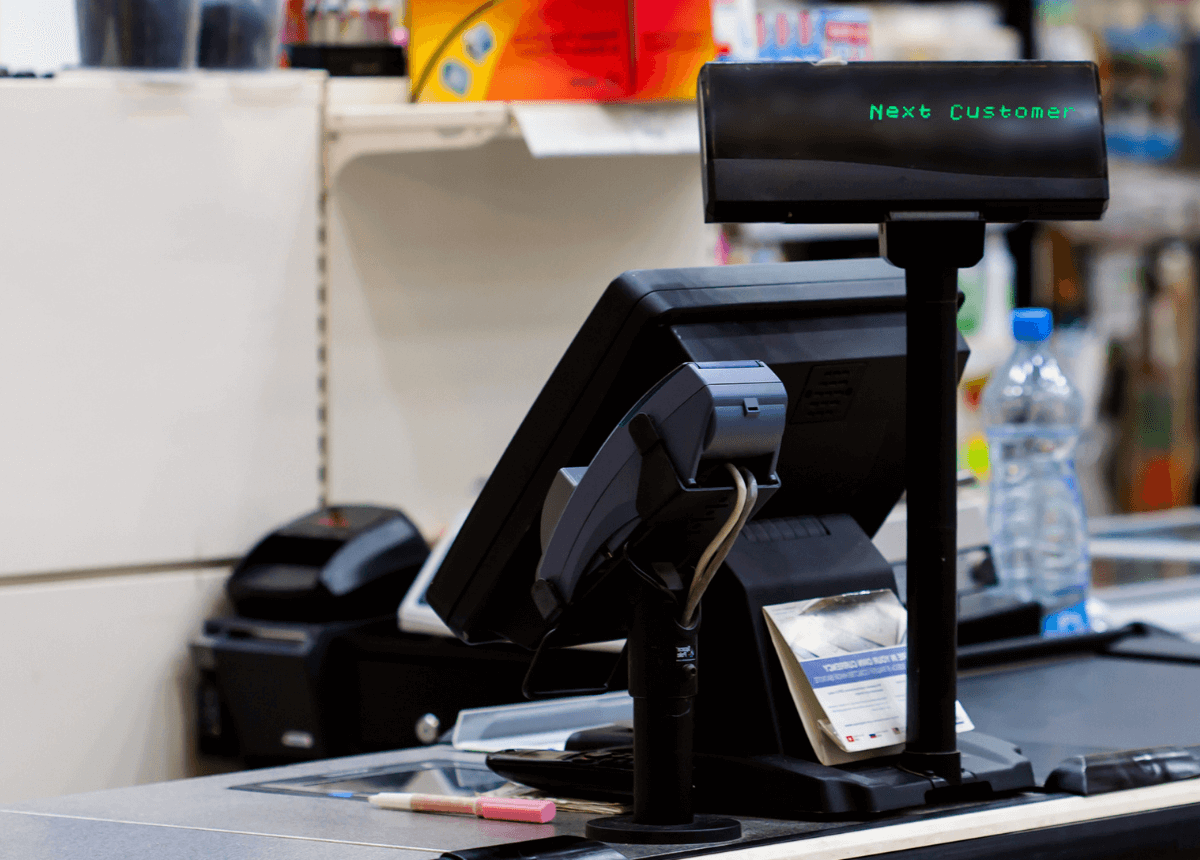How to Identify and Handle Shoplifters in your Retail Stores
Retail Keneavy Krenzin
Keneavy Krenzin

The prevention, detection, and management of shoplifting is an integral aspect of running a retail business. Long gone are the days when losses associated with shoplifting are considered an acceptable cost of doing business. Research shows that 1 in 11 people will shoplift in their lifetime, and yet only 1 in 48 shoplifters are caught. The National Association for Shoplifting Prevention estimates that the frequency and magnitude of shoplifting results in nearly $50 billion in retail crime annually. And stores aren’t the only ones suffering those losses, as communities lose the corresponding tax revenue.
What is (and isn't) Shoplifting?
The most basic definition of shoplifting is the theft of merchandise from a store or a place of business, typically by concealing an item on one’s person, in pockets, under clothes, or in a bag and leaving the store without paying.
However, the specifics of the definitions of shoplifting can vary from source to source but generally falls under the legal classification of larceny, which can be considered a misdemeanor or felony, depending on the dollar amount stolen. These laws vary from state to state and many do have laws specific to shoplifting.
While the average person may confuse shoplifting with burglary or robbery, these are different crimes that most retailers lump into the category of “external shrink,” or losses associated with customers or people outside of the organization stealing from the business. Other forms of external theft like price switching or return fraud are not usually classified as shoplifting.
Tips for Minimizing Instances of Shoplifting
So, how can retailers minimize the impact of shoplifting on their profits? Here are some tips and tricks to help prevent, detect, and deal with shoplifting:
Maintain Visibility
Dark areas and blind spots hidden from employees or video surveillance can provide an easy hideout for shoplifters to stow away items in their clothing or bags.
Maintain an Organized Store
Making sure your store is organized and laid out correctly can be a crucial factor when it comes to preventing loss. It can be difficult to monitor your store if the view is crowded by obscured aisles and disorganized shelves. As a precaution, it is always best to plan your store layout ahead of time and to maintain a clean store, so it is easier to identify when something in the store changes or is misplaced. You can also add mirrors in your store to prevent any blinds spots that may be too hard for you or your employees to constantly monitor.
Train Employees
Incorporating a loss prevention lesson in your employee training makes it easier to identify shoplifting and can encourage employees to come forward when witnessing internal theft. When the whole store is educated on loss prevention procedures it creates a standard that everyone is held up to. It also creates a better work environment when you feel your employees have gone through the proper training and can be trusted to help prevent loss in your store and can be held accountable for their actions. An Employee trained in loss prevention will be able to contribute new ways to help the store reduce loss and will encourage other employees to follow procedures.
Post Deterrents
A simple sign can go a long way in loss prevention. Posting signs that say your store prosecutes shoplifters can deter someone from the decision to shoplift or prompt them to choose another store. Other simple implications like cameras in the plane site and alarm systems at the door help remove that decision in someone’s mind and makes it easy for you to better monitor your store in a more public manner without inconveniencing the customers. When employees are active in a store and engaging with customers, this also helps to discourage shoplifters. It increases customer exposure and coverage on the floor while improving the overall experience for in-person shoppers.
Ways to Identify Shoplifters
Studies show that 7 out of 10 shoplifters decide to shoplift while they are in the store, allowing them to blend in with other shoppers. However, until they take action, you might not be able to identify them. Therefore, LP professionals need to keep their eyes open and watch for behaviors that indicate an intent to shoplift.
Grab and go. The first goal of the shoplifter is to know their exit path. People who linger near entrances and exits may be ready to grab and go after snatching some items. Watch for shoppers who are browsing but not showing interest in anything specific. They may be looking for the right moment to pick up random items and make a beeline to the door.
Hyper focused. People specifically focused on a particular aisle, especially high-value goods, may be eyeing what items they want to shoplift. Sending store staff to make friendly inquiries, including “how can I help you?” may dissuade them from their mission.
Eyeing the staff. Thieves need an exit plan, but they also need to know who is watching them. Shoppers who spend more time scouting staff members instead of merchandise can be a red flag for potential problems.
Dressing room overload. Dressing room policies changed during the pandemic, limiting access and requiring more frequent sanitizing. However, shoplifters can still use dressing rooms to sort through a large number of items, taking only a few. Keeping an eye on dressing room use before and after customers use them can cut back on crime.
Holiday shoppers. Shoplifters take advantage of times when employees are busy or distracted. Peak shopping hours, holidays, and shift changes provide an opportunity, along with their motive, to walk out the door unnoticed.
When there are more eyes on the floor, including a friendly greeter at the entrance and exit to floor staff who regularly interact with people, a potential criminal may see less of an opportunity and a higher risk.
Retailers need strong relationships with local law enforcement to prevent shoplifting. ORC is a growing and more aggressive form of theft, which occurs in-store and online. The volume of ORC is significant and requires a coordinated effort to stop the spread.
What to do when you catch a shoplifter
As a retailer, you need to understand the laws in your store’s community and develop a shoplifting policy to train your employees properly. In general, unless they know for sure that someone stole an item, they should not act or accuse. Until the suspected person leaves the store, there is not much the retailer can say to the thief. If a suspected person leaves the store, employees should have their ID badges and a witness and/or management representative present.
The above tips are general guidelines, but they also represent the LP policies in place at the nation’s largest retailer, Walmart.
Walmart has sophisticated LP procedures in place but also has extensive relationships within their communities. For example, if someone has already shoplifted from Walmart, the person may receive a “Notification of Restriction from Property,” prohibiting them from entering a Walmart for any reason. This approach is less expensive from legal proceedings and also discourages repeat offenders.
Intelligent tools are also part of Walmart’s approach to deterring shoplifting. For instance, image recognition can identify if an item taken from a shelf was paid for before leaving the premises. This combination of apprehension procedures for correctly identified shoplifters helps reduce their instore shrink.
Loss prevention should remain a major responsibility to anyone entering or continuing in the retail business. Loss is a large part of the retail market, but it doesn’t have to be what kills your store. There are always new ways for people to take advantage of your business but at the same time, new loss prevention techniques are being developed to keep your inventory secure. By following these helpful tips, you will be able to reduce loss and boost your store’s success.
Recently, Agilence teamed up with Loss Prevention Magazine on a research report aimed at measuring the changing perceptions and value of Loss Prevention teams. Responses were collected from a hundred LP professionals at every level, operating in various industries. Download your free copy of the full report today to see the results.
Learn more about how to Combat Theft & Fraud.
Related Articles

Loss Prevention Stats and Facts Every Retailer Should Know in 2022
With the welcome influx of in-store customers and growing sales volume, retails still need to keep a watchful eye on loss pre...
How to Reduce Shrink by Flagging Sales Reducing Activities
As retailers search for new ways to engage with customers, they are also seeking new ways to detect formerly hidden losses. T...
E-Commerce Fraud is on the Rise: Here’s How Retailers Can Fight Back
With the pandemic spurring online shopping adoption, digital retail has never been more popular. E-commerce sites have become...Subscribe to our blog
Receive free educational resources like exclusive reports, webinars, and industry thought leadership articles straight to your inbox.


